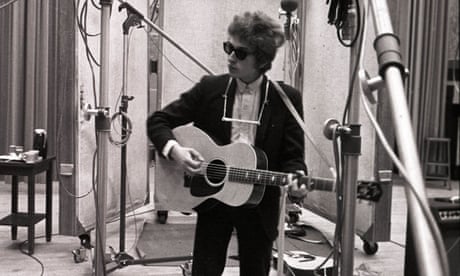INTRO: blank on blank
“I‘m never going to become rich and famous” - Bob Dylan in 1962.
- Q: “When you're rich and famous, you going to wear the hat too?”
- BD: “I‘m never going to become rich and famous”
(See the next two posts: Judson)
- The best bit: Dylan's pre-concert philosophical jousting with a "science student" (Terry Ellis)
- "Give the anarchist a cigarette" is uttered by Dylan upon learning that he had been pejoratively labeled as an anarchist by various newspapers in 1965. The event is captured in the final scene of the documentary.
Don't Look Back, Bob Dylan and the invention of the rockumentary -
Guardian -17/05/16
Pennebaker is the grandaddy of the documentary – he didn’t buy his camera, he built it,” explains Joseph Baldassare, curator of a new exhibition about Pennebaker’s film Don’t Look Back. It famously chronicled Bob Dylan’s pivotal 1965 tour of England and his transformation from a polite leading light of the marginal folk scene into an incendiary figure in the cultural mainstream.
“Very few people change the way of the world,” says Baldassare. “To me there is before Elvis and after Elvis, before Cassius Clay and after Muhammad Ali, and before Bob Dylan and after Bob Dylan. In Don’t Look Back we have the rare vantage point of seeing that moment just before.”
Shot handheld on black-and-white 16mm film, Don’t Look Back invented the “rockumentary”. Its fly-on-the-wall style flew in the face of contemporary cinematic convention, and its reputation and influence has steadily grown since its release in 1967. In 2014, the British Film Institute’s authoritative poll of movie industry experts ranked Don’t Look Back as one of the 10 best documentaries of all time.
Since the mid-1950s Pennebaker had been a pioneer of the observational “direct cinema” style, and had even helped develop the small synchronised sound and vision system which enabled it. While making films for Life magazine, he was looking for a more personal project when he met Bob Dylan in a bar in Greenwich Village. “He [Dylan] said: I have an idea for a film where I write out all the words to this song on pieces of paper, and I’ll just throw them down as I read them,” Pennebaker recalls. “I said: that’s a fantastic idea.” This eventually became the famous Subterranean Homesick Blues “video” (actually the opening sequence in Don’t Look Back)
Pennebaker was not attracted to Dylan because he was a celebrity – in fact, quite the opposite. “I was interested in real people and why they did things, or how they did things. And the only way to find that out was to follow them,” he says. “I didn’t know him [Dylan] that well, I didn’t know who he was really. But the idea of going with a musician on a tour and being able to photograph him – both when he performed and when he didn’t perform – that seemed to me an interesting idea.”
Dylan is constantly creating himself, and then standing back and trying to witness it
So did this idea turn out? “Dylan is an interesting person to watch because he is constantly creating himself, and then standing back and trying to witness it,” says Pennebaker with typical understatement. The movie is mesmeric: while it features spellbinding snatches of a musician performing at the height of his powers, the off-stage drama is just as enthralling. Arriving in England, Dylan is all politeness and charm in the face of a media circus intent on turning him into an easy-to-understand cardboard cutout. But as the chaotic tour wears on, he becomes increasingly abrasive and angry, mercilessly mocking a backstage interloper and demeaning a reporter from Time magazine.
My back pages: how Dylan’s Bootleg Series illuminates his past
Read more
“Some people thought he looked like a total shit, you know. I mean, people make up their own mind about what he is like from watching the film and that’s OK. I can’t change that,” says Pennebaker, who didn’t find Dylan at all difficult to work with. “He was very easy, we got along fine. I mean, we’re still partners.”
Despite being shot in black and white over half a century ago, Don’t Look Back still looks contemporary.
=====
bonus track
The language creator
Have you seen Dylan at word play?

No comments:
Post a Comment